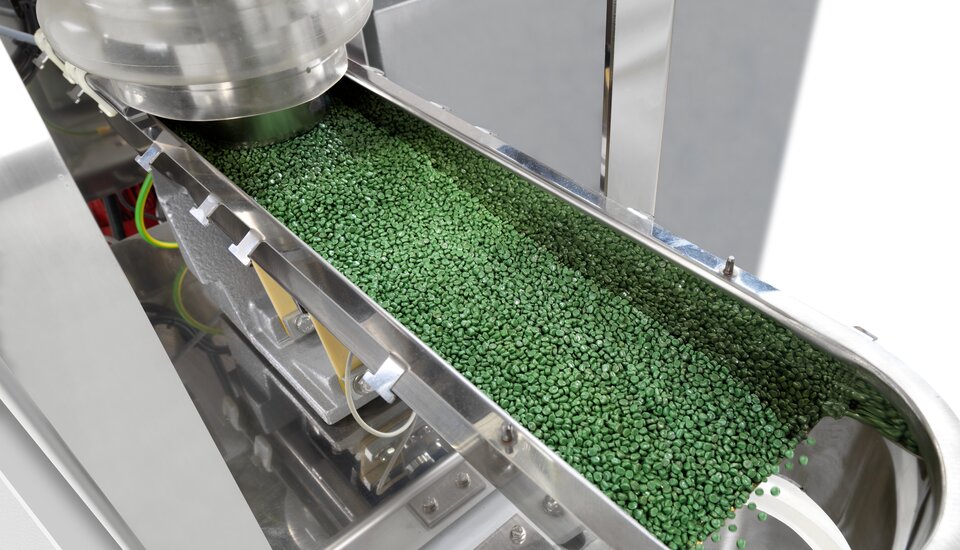
Processes & Products
The new LRX small robots
| Petra Rehmet
Controls their vacuum themselves
The new digital vacuum monitoring of the new generation of LRX small robots from KraussMaffei actively monitors compressed air consumption and identifies leaks early—which makes component demolding more energy efficient and cost-effective.
The new vacuum monitoring works completely digitally and contains the three functions of air saving, leak detection and blow-off. "The air saving function is comparable with the automatic start-stop mechanism of a state-of-the-art car. "Like a car that conserves energy by cutting the engine at a stoplight using an engine start-stop feature, in automation, only the amount of vacuum currently needed in the cycle is generated," says Thomas Marufke, Managing Director of KraussMaffei Automation. Altogether a savings of up to 95 percent of the compressed air requirement is reached. The control system shuts off vacuum generation after reaching a preset threshold value. If the vacuum level drops in the course of the hold time, the set value is restored through a short pulse. The new digital vacuum monitoring is fully integrated in the standard models of the MC6 control system. All vacuum values are therefore stored program-specifically. This, in turn, makes the robot program change easier and makes extensive conversion at the digital pressure switch unnecessary.

Schematic diagram of a demolding process
Clearly recognizable are the potential savings of the compressed air consumption from up to 95 percent downline of the air extraction
Additional leak function and blow-off function
The additional function of leak monitoring records irregularities of the automatic start-stop mechanism and feeds them back directly to the MC6 control system. This signals leaky vacuum circuits or defective suction devices at an early stage. "For this reason the new vacuum monitoring functions as an additional early detection system and supports the proactive servicing of the system (predictive maintenance)," according to Marufke. The second additional function, the blow-off function, makes the controlled storage of smaller components on the conveyor belt easier through specific blow-off. This, in turn, increases efficiency in the production cycle and optimizes the automation process.

More modular and efficient
The new generation of LRX small robots
More modular and efficient: the new generation of LRX small robots
The new generation of the small linear robots from KraussMaffei features a new progressive design with decentralized control cabinet concept and freestanding X-axis. They offer high flexibility in processes such as simple retrofitting of sensors or expansion of media circuits. Rack-and-pinion drives used in place of toothed belts offer fast, high-precision movements in all axes. A revised thermal and protection concept for electronic components with a Class IP54 rounds out the new concept and offers high uptime and safety. The new LRX 50, LRX 100 and LRX 150 can be combined individually with all hydraulic and all-electric injection molding machines with clamping forces from 350 to 6500 kN.















